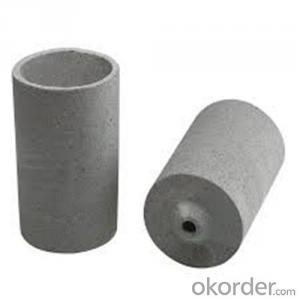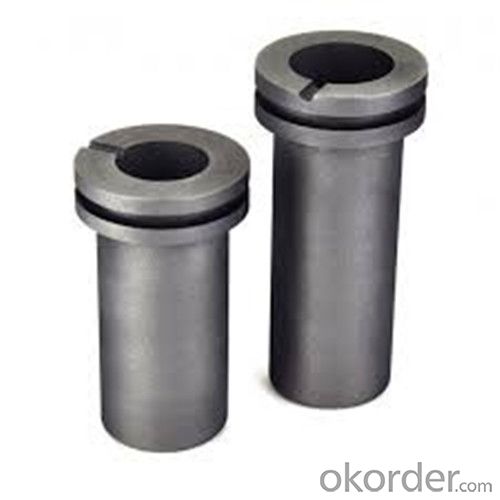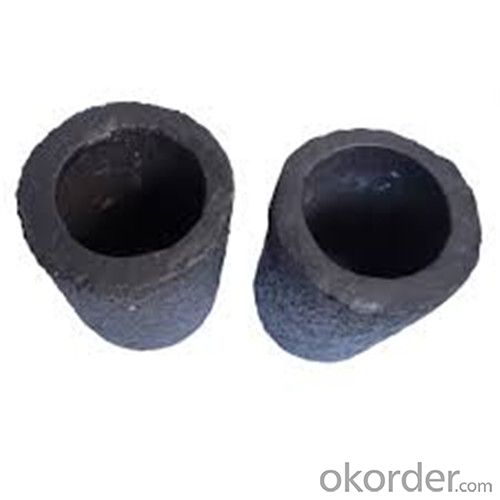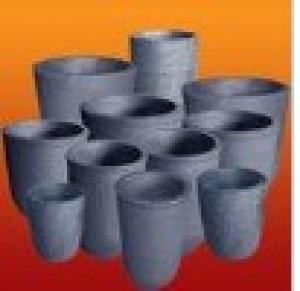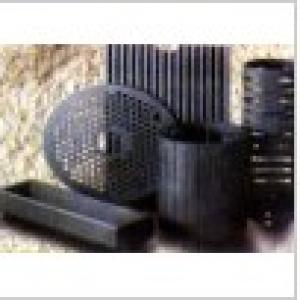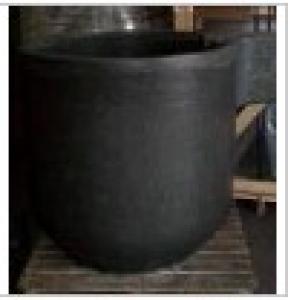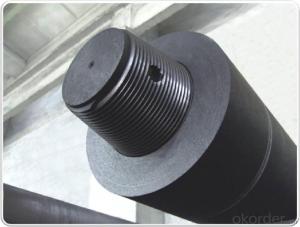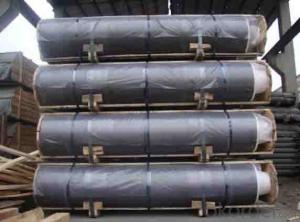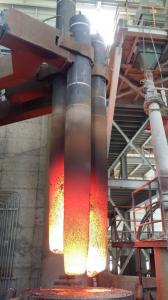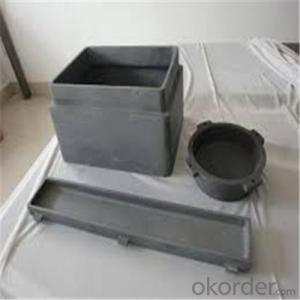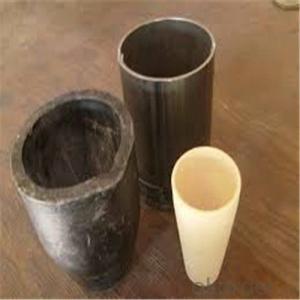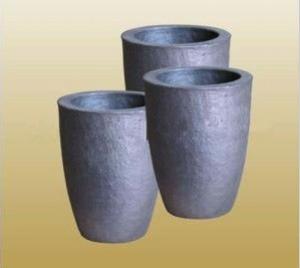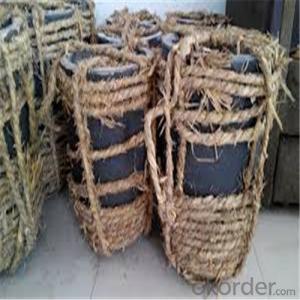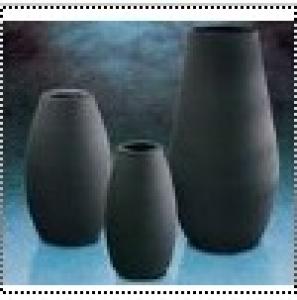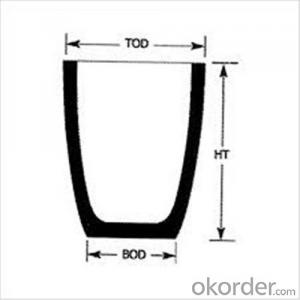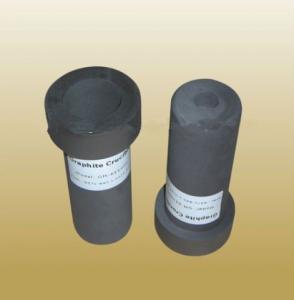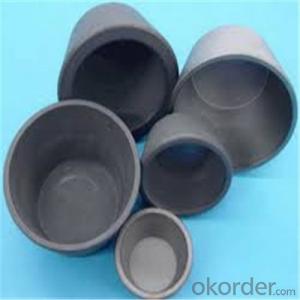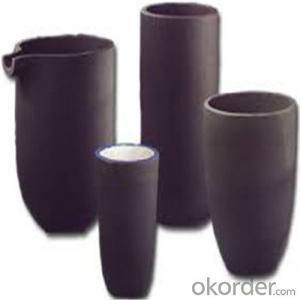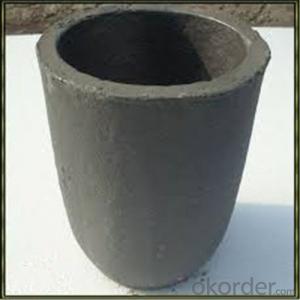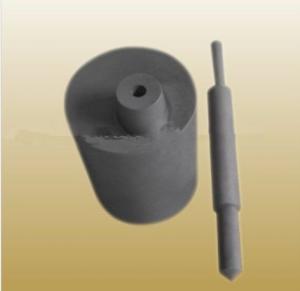SIC Carbide Graphite Clay Crucible Near Me
- Loading Port:
- Shanghai
- Payment Terms:
- TT OR LC
- Min Order Qty:
- 1 pc
- Supply Capability:
- 1000 pc/month
OKorder Service Pledge
OKorder Financial Service
You Might Also Like
Quick Details
| Application: | melting metals | Height: | depends on your requirement | Top Diameter: | 10-1200mm |
| Bottom Diameter: | 10-1200mm | Place of Origin: | China (Mainland) | Brand Name: | |
| product name: | SiC graphite crucible china graphite crucible | top diameter: | 10-1200mm | bottom diameter: | 10-1200mm |
| height: | depends on your requirement | application: | melting gold,silver and other metals | Specific resistance: | ≤14μΩ.m |
| Bending strength: | ≥25MPa | Compressive strength: | ≥50MPa | Bulk densit: | ≥1.68g/cm3 |
| Ash content: | ≤0.15% |
Packaging & Delivery
| Packaging Details: | woden case for SiC graphite crucible china graphite crucible |
| Delivery Detail: | within 20 days |
Introduction
1. Graphite crucible can be used for non-ferrous metal smelting and casting, dissolving gold
or silver ornaments, analysis of special type steel, sintering hard metal.
2. graphite crucible for smelting gold is specialized in melting gold in headgear and jewelryindustry. That requests graphite material has high density and purity, ablation-resistance, and it can be used many times. We can machine various crucibles accordingto customer's requirement.
3. Machined from high pure graphite and widely used in the gold,silver,platinum and other noble metal's melting.If it's used in oxygen atmosphere,it wil start to be oxygenized when the temperature is higher than 700-800°c. If it's used in the protective atmosphere, it can stand more than 2000°c.
4. widely used in such fields as industrial furnaces, mono-crystalline silicon machinery, mono-crystalline silicon machinery, electron, semi-conductor, metallurgy, oil, chemistry, textile, electrical machinery, electrical equipment, electrical furnace, traffic, communication industry, medicine, etc.
Advantages
1.good thermal conductivity
2.High-temperature resistance
3. Small thermal expansion coefficient.
4.Strong corrosion resistance to acid and alkali liquid
5.Good chemical stability
Technology parameter
Item | Unit | High pure graphite | ||
baked twice | baked three time | baked four times | ||
impregnated once | impregnated twice | impregnated three times | ||
Grain size | mm | ≤325mesh | ≤325mesh | ≤325mesh |
Bulk density | g/cm3 | ≥1.68 | ≥1.78 | ≥1.85 |
Specific resistance | μΩ.m | ≤14 | ≤14 | ≤13 |
Bending strength | MPa | ≥25 | ≥40 | ≥45 |
Compressive strength | MPa | ≥50 | ≥60 | ≥65 |
Ash content | % | ≤0.15 | ≤0.1 | ≤0.05 |
We accept small orders,please inquiry us freely. | ||||
Item | Unit | Fine-grain Specialty Graphite model 1 | Fine-grain Specialty Graphite model model2 | ||
Guarantee value | Typical value | Guarantee value | Typical value | ||
Max grain size | mm | 0.8 | 0.8 | 0.8 | 0.8 |
Bulk density | g/cm3 | ≥1.70 | 1.73 | ≥1.73 | 1.76 |
Specific resistance | μΩ.m | ≤8.5 | 7.5 | ≤8.0 | 7 |
Bending strength | MPa | ≥10.0 | 11 | ≥12.0 | 12.5 |
Compressive strength | MPa | ≥24.0 | 27 | ≥31.0 | 34 |
Thermal Condcutivity | W/(m.k) | ≥120 | 150 | ≥130 | 160 |
C.T.E.(100-600) °C | 10-6/°C | ≤2.5 | 2.2 | ≤2.5 | 2.1 |
Ash content | % | ≤0.3 | 0.09 | ≤0.3 | 0.09 |
We are always avliable to service you! | |||||
Parts sizes of graphite crucible table
Product name | Dimensions(mm) | Weight(g) | |||
Φ1 | Φ2 | Φ3 | H | ||
1 kg graphite crucible | 58 | 47 | 35 | 88 | 160 |
2kg graphite crucible
| 65 | 58 | 44 | 110 | 240 |
2.5kg graphite crucible
| 65 | 58 | 44 | 126 | 300 |
3kg graphite crucible
| 85 | 75 | 60 | 105 | 390 |
4kg graphite crucible
| 85 | 75 | 60 | 130 | 500 |
4kg graphite crucible
| 85 | 75 | 60 | 136 | 500 |
5kg graphite crucible
| 100 | 89 | 69 | 130 | 700 |
5.5kg graphite crucible
| 105 | 90 | 70 | 156 | 800 |
6kg graphite crucible
| 110 | 97 | 79 | 174 | 970 |
We have all kinds of sizes graphite crucibles in stock,please feel free to contact us. | |||||
packaging & shipping
Packaging
1. For each type, we can send you the detailed high-resolution pictures since we have the sample in our hand.
2. For packaging, we have the professional packaging starff, pls. don't worry about the shipping.
Our service
1.Delivery time is 5~7 days for sample and 15 working days for bulk order;
2. Strong production capacity and strict quality control system;
3. Your inquiry and problems related to our products or prices will be replied in 24 hours;
4. Well-trained and experienced staffs to answer all your inquires;
5. After-sale tracking service for all of our clients;
6. OEM is available; small quantities, mixed bulk orders are also welcome;
7. Payment: L/C, D/A, D/P, T/T, Paypal , Western Union, MoneyGram;
8. Delivery way: UPS, DHL, TNT, FEDEX, EMS, CHINA POST.
After-Sales Service
1.1year warranty for most of our products;
2.We will arrange delivery of the goods on time:
3.Within the warranty period, we will bear all the qulity problem of our produts;
4.Beyond the warranty period, we will despatch the replacement parts to help fix the products;
5.Without any problem, we will gain the feedbacks of our products to help improve better products.
FAQ
Q:How to get in touch with us?
A:You can clik "Contact Supplier" above, or click "Chat Now!". We provide 24-hour service!
Q: How can I get free samples?
A: Only carbon brush for power tools/automobiles/motorcycle----no more than 4 sets for each model is free of charge.
Q:How to order?
A:Quotation→Price comfirming→Sign a contract→Mass production→Delivery
Q:How to pay?
A:30% T/T deposit.→70% balance by T/T against B/L copy.
Q:How to get after-sales service?
A:You can contact with your appointed sales.
You can also get in touch with our Quality Assurance Department: zdatzddt.com
Company Information
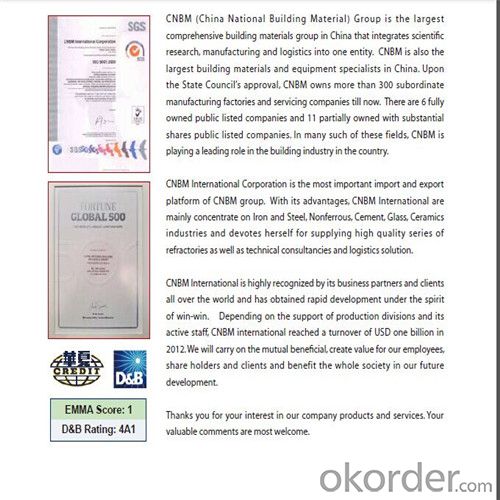
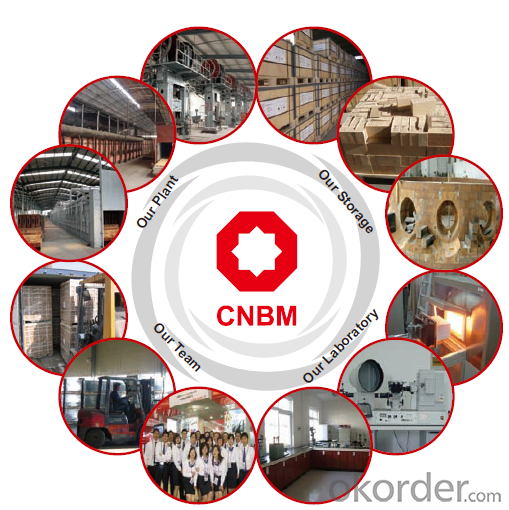
Other refractory materials for High temperature industry
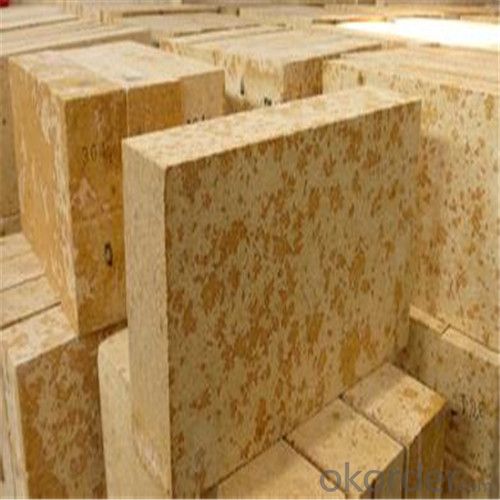
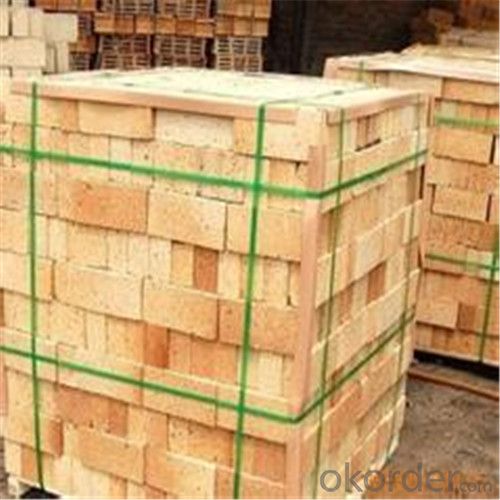
- Q: Is the silicon carbide crucible good for use? What's the difference between an ordinary graphite crucible and a graphite crucible?
- The crucible can be placed on the iron tripod with either positive or oblique directions, and can be placed on the basis of the requirements of the experiment. When the crucible is heated, it cannot be immediately placed on a cold metal table to prevent it from breaking due to rapid cooling. It should not be placed on the wooden table immediately so as not to spoil the table or cause fire. The correct method is to cool the metal on the tripod or to let it cool slowly on the asbestos net. For crucible purposes, see the crucible tongs. The relevant information from the supply of silicon carbide crucible dachengxian Tianjin high silicon carbide crucible crucible factory released using the latest international technology of isostatic pressing method and strict quality assurance inspection system, using advanced refractory raw materials, high-tech formula developed a new generation of high-quality silicon carbide crucible, this product has a large volume density, high temperature resistant, fast heat, acid and alkali resistance, high temperature strength, oxidation resistance and high service life is 3 times that of the clay graphite crucible.
- Q: What is the use of graphite for corrosion resistance?
- The corrosion resistance of graphite with good thermal conductivity, low permeability, can be used for the production of heat exchanger, reactor, condenser, combustion tower, absorption tower, cooler, heater, filter and pump equipment.
- Q: Are there any alternative materials to graphite for crucibles?
- Yes, there are alternative materials to graphite for crucibles. Some common alternatives include ceramic, quartz, boron nitride, and certain types of metals such as platinum or stainless steel. These alternative materials are chosen based on specific requirements such as high temperature resistance, chemical inertness, and thermal conductivity.
- Q: How does a graphite crucible handle chemical resistance?
- A graphite crucible is highly resistant to chemical corrosion due to the inherent properties of graphite. Graphite is composed of carbon atoms arranged in a hexagonal lattice structure, which provides it with exceptional chemical stability. It is non-reactive with most chemicals, including acids, bases, and organic solvents. The chemical resistance of a graphite crucible is primarily attributed to its high melting point and low reactivity. Graphite has a melting point of over 3,500 degrees Celsius, which allows it to withstand extreme temperatures and resist chemical degradation. This makes it suitable for a wide range of applications involving high-temperature processes, such as melting metals and alloys. Furthermore, graphite has a non-porous structure, which prevents chemicals from permeating its surface. This non-porosity minimizes the risk of chemical absorption, ensuring that the crucible remains chemically inert and resistant to corrosion. As a result, it can be used with various reactive substances without the fear of contamination or chemical reactions. However, it is important to note that while graphite crucibles are highly resistant to most chemicals, they may still be susceptible to certain aggressive substances under specific conditions. For instance, graphite can react with strong oxidizing agents such as fluorine gas or molten alkali metals. Additionally, prolonged exposure to certain corrosive environments or extreme temperatures can gradually degrade the crucible's resistance. In summary, a graphite crucible exhibits excellent chemical resistance due to its high melting point, non-reactive nature, and non-porous structure. It can effectively withstand the corrosive effects of most chemicals encountered in various industrial processes, making it a reliable choice for applications requiring chemical stability. However, it is crucial to consider the specific chemical environment and conditions to ensure optimal performance and longevity of the crucible.
- Q: How does the thermal conductivity of the molten metal affect the performance of a crucible?
- The thermal conductivity of the molten metal plays a crucial role in determining the performance of a crucible. The thermal conductivity refers to the ability of a material to conduct heat, and in the case of a crucible, it directly affects its ability to withstand and distribute high temperatures. A high thermal conductivity of the molten metal can lead to faster heat transfer from the crucible, resulting in a more uniform distribution of heat. This is beneficial as it allows for faster and more efficient melting or heating of the metal inside the crucible. It also helps in maintaining a consistent temperature throughout the crucible, which is important for certain industrial processes where precise temperature control is required. On the other hand, a low thermal conductivity of the molten metal can have negative implications on the performance of a crucible. It can lead to uneven distribution of heat, causing hot spots or cold spots within the crucible. This can result in uneven melting or heating of the metal, leading to poor quality or incomplete reactions in industrial processes. Additionally, the lack of efficient heat transfer can potentially lead to overheating of certain areas of the crucible, leading to premature failure or damage. In summary, the thermal conductivity of the molten metal directly affects the performance of a crucible. A high thermal conductivity allows for faster and more efficient heat transfer, resulting in better temperature control and more effective industrial processes. Conversely, a low thermal conductivity can lead to uneven heat distribution and potential damage to the crucible, compromising its performance.
- Q: Graphite producer / graphite manufacturer / graphite enterprise brand, where is there?
- Our products are widely used in machinery, chemical, mold, oil, textile, mechanical and electrical, diamond sintering mold and other graphite products.
- Q: What are the technical specifications of graphite crucibles?
- Crucible; physical and chemical index; standard parameter; test dataThe refractoriness is 1680 degrees, and the refractoriness is 1685Carbon content 38%, carbon content 41.46%Porosity less than 35% porosity is less than 32%Volume density 1.6g/cm3 volume density 1.71g/cm3The above data are referred to Qingdao Huatai graphite, hope to adopt, thank you.
- Q: Graphite electrode, high temperature resistant oxidation coating, formulation technology
- In the high temperature induction heating graphite crucible, graphite electrode used in high temperature oxidation environment will occur due to the high temperature arc part sublimation oxidation, will cause the continuous consumption of graphite crucible, even broken, broken. The graphite crucible loss rate will reach 40-60%. Zhi Sheng years of research production Wei Hua ZS high-temperature sealing paint is mainly used in high temperature environment protection against oxidation of graphite electrode, graphite crucible, graphite products, slow oxidation rate, increase the strength of the material, improve the service life. The fracture rate of graphite electrode is lower than that of graphite electrode.
- Q: Aluminum crucibles can be used to heating soda?
- The reaction of alumina and sodium carbonate will generate high temperature, sodium aluminate and carbon dioxide. If you want to heat up sodium carbonate, you can use graphite crucibles and glass
- Q: Can graphite crucibles be used for material synthesis?
- Material synthesis can utilize graphite crucibles, as they possess distinctive properties that make them an excellent choice. Graphite's high melting point, exceptional thermal conductivity, and chemical inertness render it appropriate for various high-temperature reactions and processes. Graphite crucibles find frequent use in synthesizing metals, alloys, ceramics, and compounds. They are particularly favored for tasks involving high temperatures, such as melting, heating, and vaporization. Graphite's high thermal conductivity enables efficient heat transfer, ensuring uniform heating and temperature distribution throughout the crucible. Chemical inertness is another advantage of graphite crucibles. They do not react with most materials, making them ideal for synthesizing compounds or alloys without contamination. Additionally, graphite exhibits low reactivity with oxygen, which is crucial in preventing unwanted oxidation during material synthesis. Graphite crucibles are also renowned for their durability and resistance to thermal shock. They can withstand rapid temperature changes without cracking or breaking, ensuring the integrity of the material synthesis process. This durability allows for repeated use of the crucibles, making them a cost-effective option in the long run. In conclusion, the widespread use of graphite crucibles in material synthesis can be attributed to their high melting point, excellent thermal conductivity, chemical inertness, and durability. These unique properties make them suitable for a wide range of applications and ensure the successful synthesis of various materials.
Send your message to us
SIC Carbide Graphite Clay Crucible Near Me
- Loading Port:
- Shanghai
- Payment Terms:
- TT OR LC
- Min Order Qty:
- 1 pc
- Supply Capability:
- 1000 pc/month
OKorder Service Pledge
OKorder Financial Service
Similar products
Hot products
Hot Searches
Related keywords
